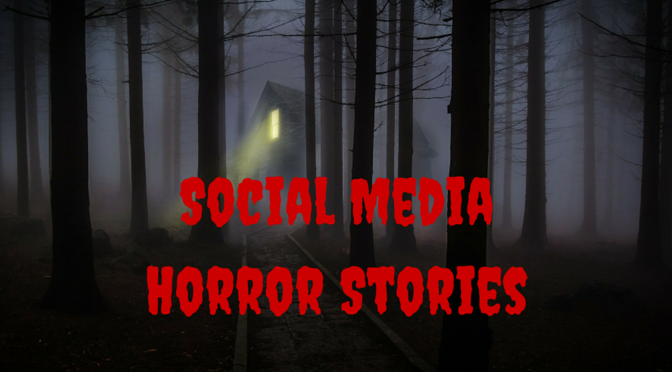

It’s that time of year again.
The leaves are off the trees, the grey clouds have descended, and the veil between the worlds grows thin. That’s right, it’s Hallowe’en!
In honour of this spooky celebration, we’re bringing you some of our favourite social media horror stories– so read on and beware…
Engaging With Current Events Goes Horribly Wrong
In November 2013, actor Paul Walker (known for his work in the Fast & Furious series) died tragically in a car accident.
Fans and news outlets alike were abuzz on social media, expressing grief, regret and shock at the news.
Unfortunately, car insurance company 4AutoInsuranceQuote.com decided to hijack users’ emotional messages with plugs for their car insurance.
“@RealPaulWalker Yo Paul did you have auto insurance for that crash? Hope so – 4autoinsurancequote.com”, reads one particularly tasteless tweet, directed to the actor’s verified Twitter account.
Engaging with current events can be a brilliant way of boosting your business’ profile online, but it’s important to make sure that whoever is responsible for your social media knows what kind of news is appropriate.
Trying to flog car insurance off the back of a terrible accident? Horrifying.
When Hashtags Go Bad
In an effort to clean up public perceptions of coal as an energy source, the Minerals Board of Australia launched a campaign celebrating the fuel’s ‘endless possibilities’.
Handily glossing over points such as its non-renewable nature, the fact that thousands of people die each year from coal pollution, and the fact that coal is the primary cause of global warming, the ad celebrated coal as ‘amazing’.
It didn’t take long for the public to pick up on the ridiculous advertisement– at which point, they proceeded to rip it to shreds in a very public way.
In a brilliant example of ‘bashtagging’, Twitter users banded together in response to the campaign, tweeting satirical and outraged messages with the hashtag #coalisamazing.
#coalisamazing for air quality pic.twitter.com/bPWkkuRNA0
— Kerry Glover (@TheRealKerryG) September 7, 2015
My uncle was killed in one of these cages when it hurtled into the floor of a mine shaft – #coalisamazingpic.twitter.com/aM7KyginbI
— Jason Thompson (@Simulated_Jase) September 6, 2015
Responses ranged from amused to enraged. The campaign went viral online– but not quite for the intended reasons.
Losing control of the public response to your campaign can be a scary prospect, and once it’s happened, it can be nigh impossible to stop. Taking the time to think not just about what you want to say, but also how your message will be received, is crucial when creating any content for your social channels.
Disgruntled Employees Air Dirty Laundry
Hitting hard times is frightening enough for any business, without the added stress of a PR disaster.
Several years ago, music chain HMV was faced with a need to lay off a large number of staff. Unfortunately, staff still had access to the business’ social media channels during the firing.
We’re tweeting live from HR where we’re all being fired! Exciting!! #hmvXFactorFiring
posted one soon-to-be-ex employee from HMV’s official Twitter account. That tweet was followed by a string of messages expressing anger and disappointment at the company.
Just overheard our Marketing Director (he’s staying, folks) ask “how do I shut down Twitter?” #hmvXFactorFiring
said one tweet gleefully.
The tweets were deleted as soon as possible, but the damage was done– journalists and the rest of Twitter had already picked up on the story. Years later, this is still the best example of the importance of policing access to your social profiles.
Make doubly sure that no ex or soon-to-be-ex employees are able to damage all of your hard work with just a few nasty tweets.
Mistakes can happen on any social network.
However, it’s not a coincidence that all of the social media disasters we’ve chosen are taken from Twitter.
Twitter’s features make it the ideal breeding ground for horror stories.
Twitter is the only network where content is seen almost in real time. It’s fast paced, so any mistake will be picked up on, retweeted or responded to– fast.
Once a post has been retweeted, it’s out of the writer’s control. Even if the original tweet is deleted, screenshots and outraged responses will linger.
By and large, all profiles on Twitter are public. That means that any tweets, shares and responses are incredibly visible– more so than on any other network.
This makes it a fantastically powerful tool for businesses, but with great power comes great responsibility…
Do you have any social media hair-raisers to share? There are so many examples to choose from, we’d love to hear your favourites. Let us hear them in the comments!
– Moya